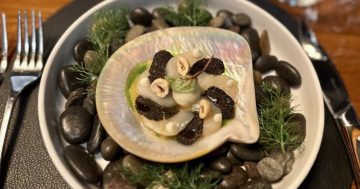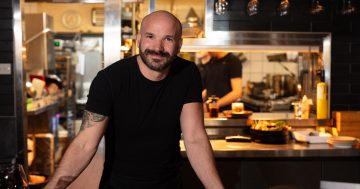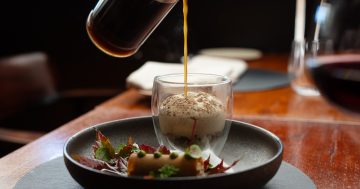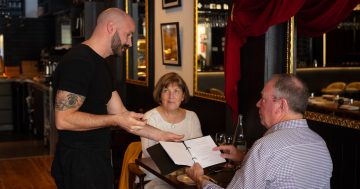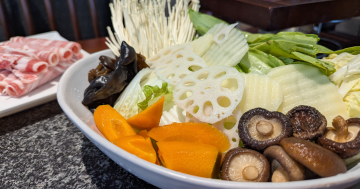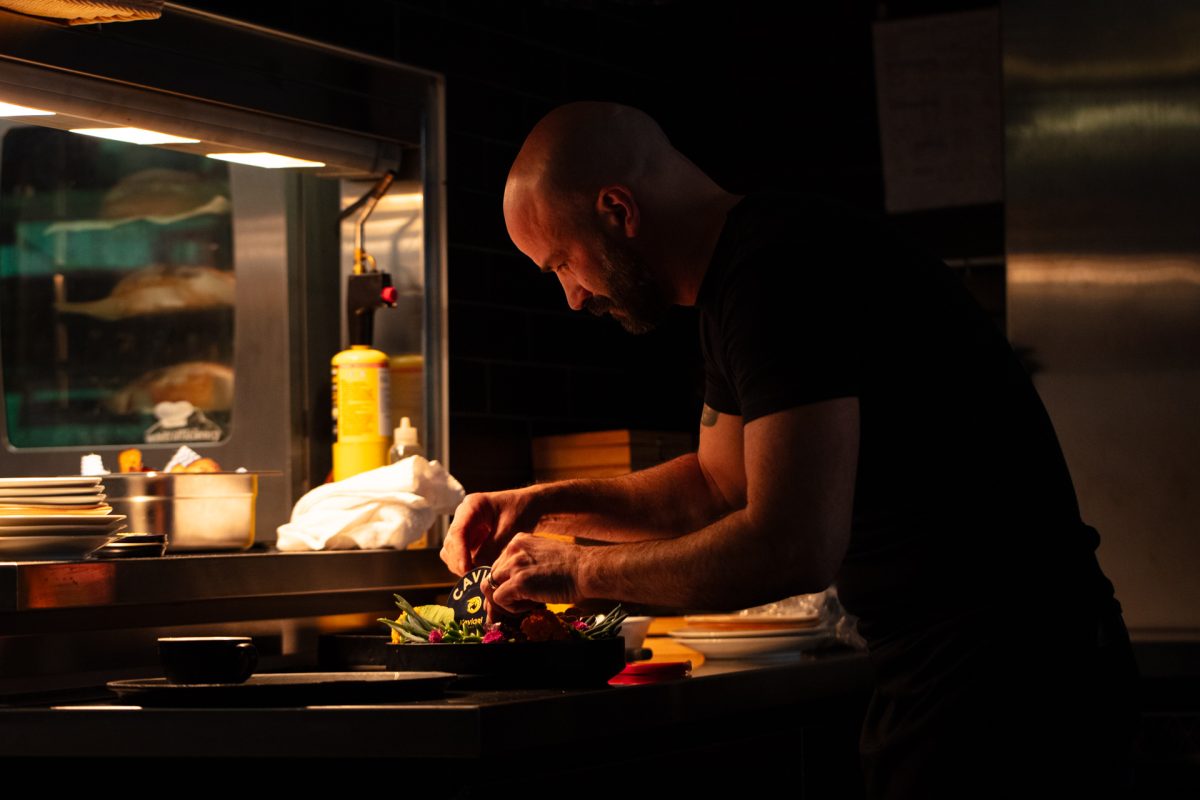
Les Bistronomes executive chef Clément Chauvin is on a mission to offer Canberrans a proper introduction to the world of caviar. Photo: Thomas Lucraft.
To the average person, caviar is synonymous with one thing only: luxury. To Les Bistronomes executive chef Clément Chauvin, this perception of one of the world’s rarest and most heavily guarded food products is reductive – that’s why he serves it at his restaurant.
“Many people who try caviar without knowing its story might say it’s overrated. They have the mindset that because it’s so expensive, it’s got to blow their minds,” he says.
“What makes it so expensive is the rarity. It’s not ‘just fish eggs’.”
In fact, caviar only ever comes from one species of fish – the sturgeon – whose reproduction cycle, depending on genus, ranges between 10 and 20 years.
Adding to the scarcity are long-standing bans on wild sturgeon fishing to recover drastically diminished populations.
“Any farmer who wants to go into the caviar business needs to look after a fish for up to 20 before being able to harvest anything, and if anyone gets caught fishing a wild sturgeon, it’s fines and possibly jail time. It’s no joke,” Clément says.
“These days, all the caviar in the world is sustainably farmed, and the regulations on the farms are very, very strict.”
The Beluga, with its 20-year reproductive cycle, is perhaps the most prized of all the sturgeons. Much like oysters or wine, the caviar adopts elements of its flavour, texture and overall quality from its environment. So, even within this subset of caviar are different grades, decided by factors such as the size, colour and firmness of the grain.
“The flavour profile can vary from buttery and creamy – almost like a triple cream cheese – to having fishy, nutty or seaweed flavours in any combination,” Clément says. “The complexity of the flavour and spectrums are very wide.”
Among the most prestigious and perhaps the most elusive is Kaviari – the brand sold at Les Bistronomes.
The brand was founded in 1978 by Parisien Raphaël Bouchez, who made it his life’s mission to source the best caviar from producers across the globe.
“This guy was only interested in the top of the top caviar in the world … He goes from farm to farm, hand-selects the best and imports it to Paris for in-house curing and maturing,” Clément says.
“Kaviari is now the supplier of more than 50 per cent of the three Michelin-starred restaurants around the world.”
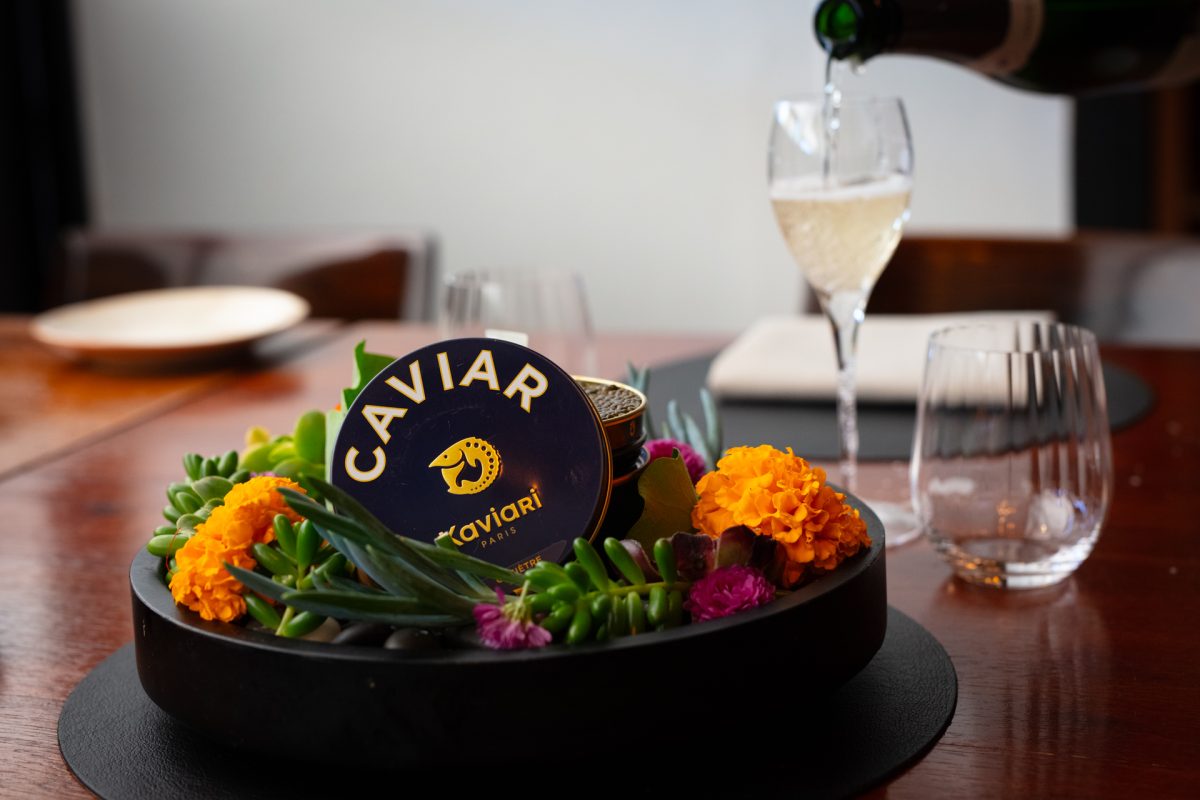
Caviar is not “just fish eggs”. Photo: Thomas Lucraft.
How to best serve caviar depends on the quality and flavour profile, with more subtle flavour profiles best served as an aperitif and more robust profiles with food.
Caviar features in all Les Bistronomes degustations and, like everything at the Canberra fine dining establishment, is treated as an experience with an element of personal preference.
“We have a Vichyssoise (potato and leek) soup served with leek terrine and Oscietra caviar. You can choose to have it served on the leek terrine or receive a little spoon of caviar – what we call a ‘bump’ – on the back of your hand. It might sound strange, but the exchange of temperature develops all the natural flavours of the caviar,” Clément explains.
“The other way is to enjoy it as an aperitif before the meal starts. We serve it with condiments, a little savoury potato crepe Vonassienne, fresh salted cucumber and radish for a palate cleanser between bites, and a glass of champagne.”
With Kaviari caviar, the champagne is nothing less than Frerejean Frere – the official champagne of the Michelin guide, produced in small amounts by none other than Rodolphe Frerejean-Taittinger (yes, that Taittinger).
As caviar enthusiasts know, there’s no need to “save” caviar for a special occasion – the caviar is the occasion. To underscore this point, Les Bistronomes will soon be upping the ante on presentation.
“I went on a trip to a three-Michelin-starred restaurant in Singapore called Odette, where Kaviari was served in a little wooden box. There on the lid was written ‘Odette by Kaviari’, and it was so classy. I thought, I am probably the biggest purveyor of caviar in Australia’s capital city, I want a box!” Clément laughs.
“My supplier organised a meeting for me with one of the managers of Kaviari in Paris. They drilled me on my cooking philosophy, my resumé and my motivation for wanting a custom box.”
Kaviari’s policy on custom boxes is that only one is permitted per country, and there was already one in Adelaide. But passion and persistence paid off, and a beautiful black wooden box with a gold plate that reads “Les Bistronomes” is now being produced.
“It’s very sexy. I can’t wait for people to see it.”
Les Bistronomes is located at 18 Blamey Place at the Campbell Shops and is open Tuesdays to Saturdays for lunch and dinner.












